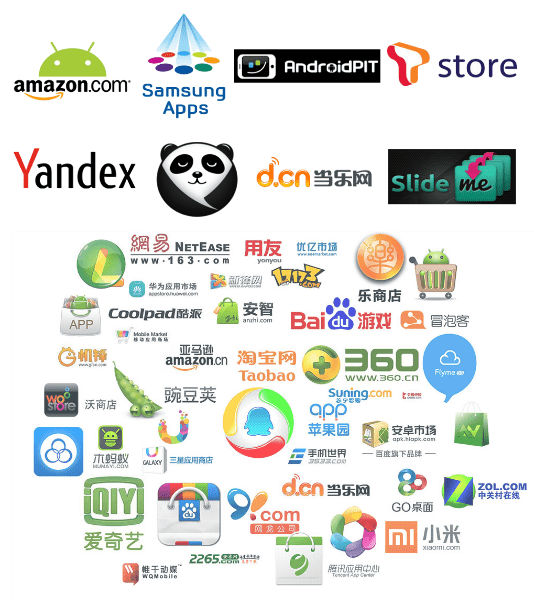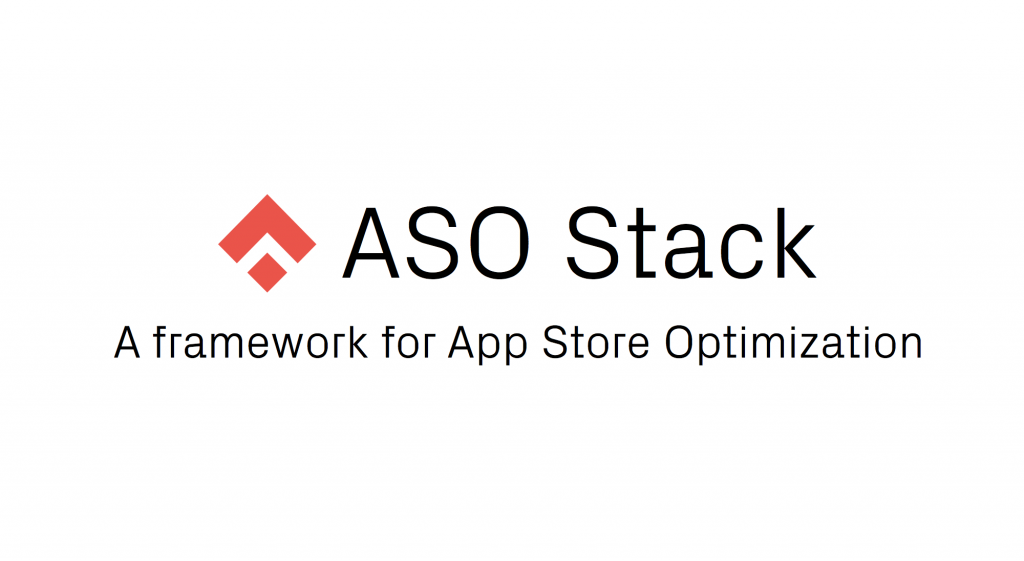Introduction of a framework for ASO and our ASO eBook
NB: Phiture is hiring for a key role to lead our evergrowing ASO team. You’ll be responsible for leading and overseeing the success of our App Store Optimization service team and help Phiture to lead the way in mobile growth. Read more about the role here
With the app stores nearing their tenth anniversary, the field of App Store Optimization has matured, albeit with added complexity, not least by virtue of Apple’s announced changes to the App Store with iOS 11. To help people interested in ASO to get a better grip on what App Store Optimization (ASO) is and how to be successful at it, myself (Phiture — Berlin, DE) and Gabe Kwakyi (Incipia — Detroit, US) have partnered to write a complete guide to ASO. The eBook was launched in September 2017.
Leading up to the launch, we previewed the select content of the book with the industry. This is the first post in this preview series. One of the first things we set out to do when writing this book on app store optimization, was to build a framework illustrating how all the pieces of ASO are linked together.
We present that framework here today and would love to gather your feedback:
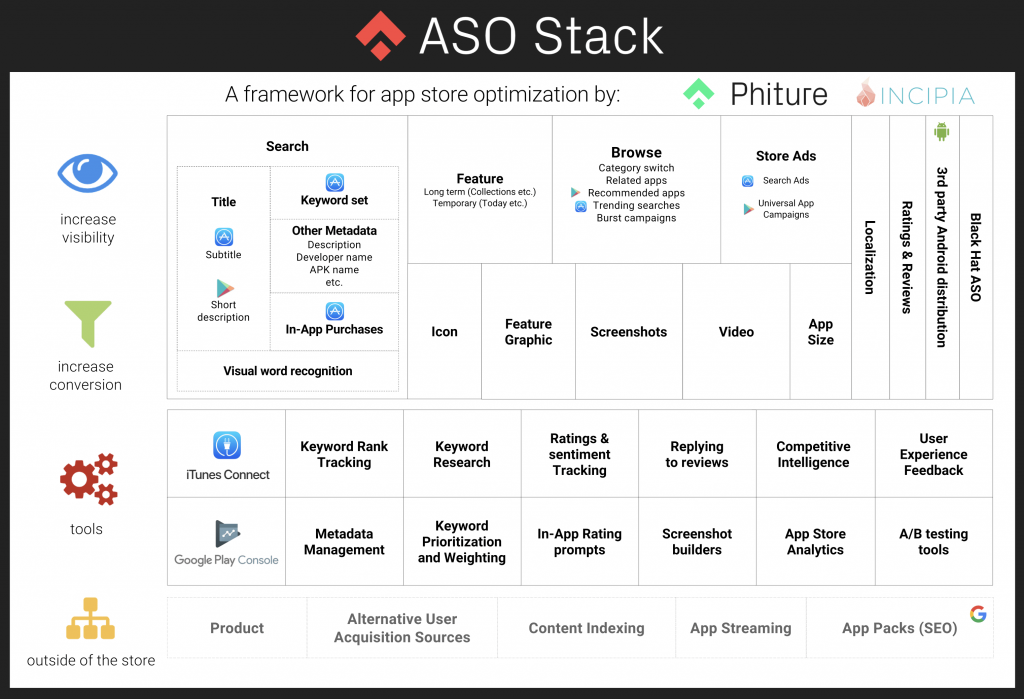
The App Store Optimization Stack is a cheat sheet for mobile marketers that want to better understand what levers they can pull to improve their app store presence.
In these series of four posts, we will unpack the stack and give an overview on all the tactics out there. The eBook that’s coming later in the summer, will be an all-encompassing work aiming to give you hands-on advice on how to effectively optimize each of the elements.
The four posts will each unpack one of the layers:
- Increase visibility: how to get your app in front of more people inside of the store?
- Increase conversion: how to convince people to download your app?
- Tools: how can ASO tools help you speed up and optimize your app store presence?
- Outside of store: what impact do outside influencers have on ASO and how do they overlap with your ASO work?
Increase visibility

The first goal when doing ASO is to increase your app’s visibility. You can do that by getting it in front of more people who are trying to discover new apps or games, or who are searching for a specific app title. In the next subchapter, we will describe the various aspects that should be kept on mind for increasing your app’s store visibility.
Getting featured
Some publishers have established such strong relationships with the App Store and Google Play Store teams, that a huge chunk of their installations are derived via prominent featuring. The Berlin-based recipe app “Kitchen Stories” comes to mind as such an example. Next to a great product they actively worked on building up a strong relationship with representatives of both companies as well as thinking ahead about the promotional calendar to come up with relevant app updates that tie in neatly with that calendar.
Some game publishers have full-time roles dedicated just to facilitate the conversations with regional and global app store managers. But even indie developers with a high-quality app are often featured if they pitch the app store managers in a timely fashion about an exciting new app or update they are bringing to the market. In our upcoming eBook, contributor Peter Fodor will unfold how you best pitch your updates to Apple and Google.
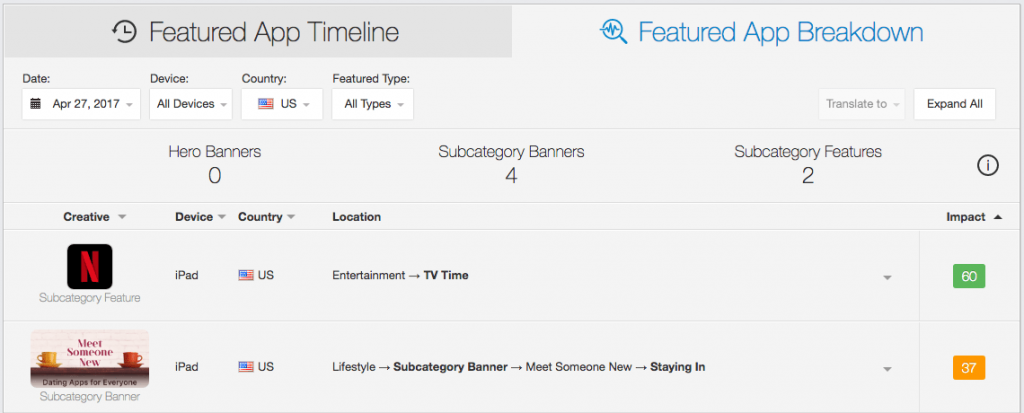
Screenshot: ASO Tool SensorTower has its own scoring system for the impact of features.
Top charts
Another common app discovery method for users is browsing the charts to see what apps are popular. Both platforms have three types of charts, one each for showing the top free apps and paid apps with the most downloads and the third listing top grossing apps that generated the most revenue via paid download or in-app purchases. Google also provides a fourth top chart for top trending apps. Top charts are tied to app and play store territories and are available for apps overall and within each category of apps within a territory. The higher you rank in these charts, the more eyeballs you will get that can lead to installs.
The impact of charts in ASO is three-fold. First, one should be aware of the fact that an influx of installs can cause a higher top chart position and therefore additional downloads. Second, some ASOs might have the remit and budget to do so-called “Burst campaigns”. These campaigns are typically aimed at getting as many installs as quickly as possible in order to go to the top of the charts. These often incentivized installs typically don’t stick around as the users who download them didn’t have much intrinsic intent to download the app in the first place: such campaigns are all about the organic uplift that is caused by the change in chart position and thus visibility. Since the inception of these campaigns, they have seen a rapid decrease in ROI as nowadays it requires a lot more downloads to get a valuable chart position. Third, the ASO should (re)consider in what category an app should be placed, with an eye for increasing visibility. This decision should be based on a variety of factors, one of which being the rank that an app can achieve in a target category.
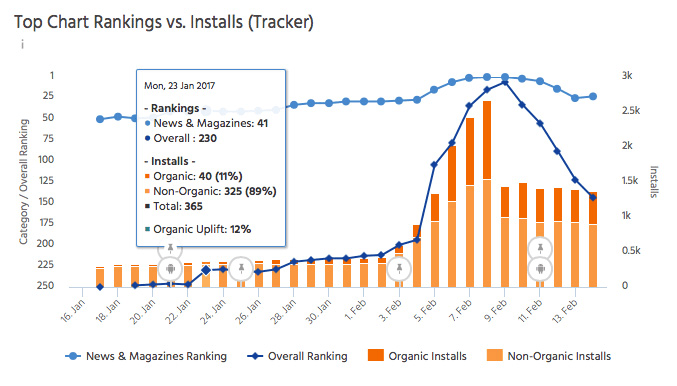
Screenshot: ASO tool “The Tool” linking organic uplift to category rankings.
Keyword Optimization
Search accounts for 65% of all installs (!). Nearly half of that traffic comes from generic searches (“photo editor”), with a little bit over half coming from specific searches for brands (“Google”), titles (“Facebook Messenger”) and typos or misspellings thereof (“Facebook”). These are data points coming directly from Apple and Google and just today the App Store release new analytics for source attribution from search:
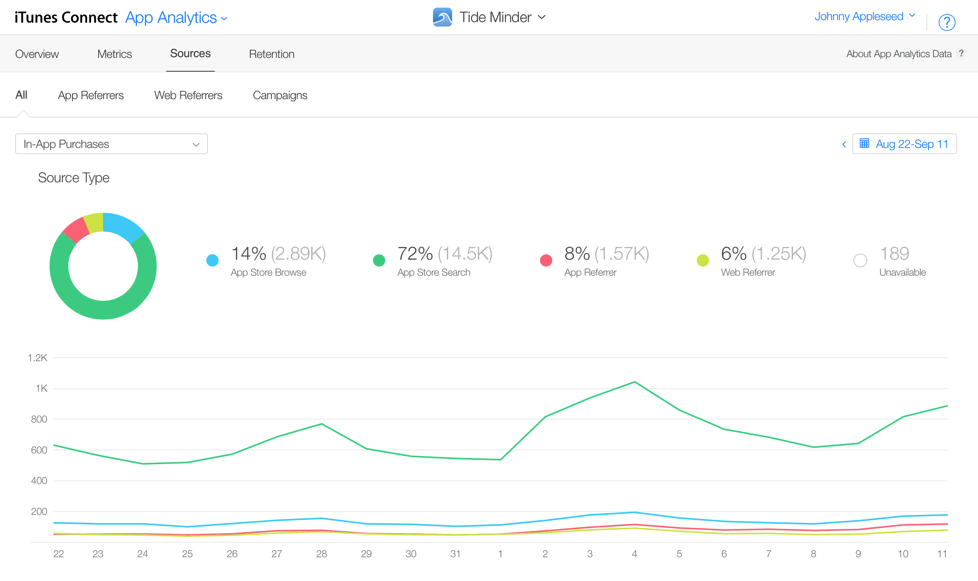
With the iTunes update from 4th of May 2017, people can now see on their own app-level how much app units come from search.
Since this can be such a big opportunity, keyword optimization (KWO) is considered by a lot of publishers to be the most important part of ASO next to conversion rate optimization. For some apps, keyword optimization isn’t so interesting, such as a banking app companion where the user has to be an existing client in order to make use of the app. Ensuring that users are able to find the app on a brand name or misspelling search might suffice in this case.
For most apps, however, KWO can add a great source of high-quality traffic, given that targeting relevant keywords puts your app in front of users with specific and relevant intent. Whilst with any acquisition strategy the goal is to acquire monetizable customers, for keyword optimization you need to look at other lead indicators. The main goal in KWO is maximizing your app’s rank on valuable keywords that are both high in search volume and relevance to your app (industry best practice is to focus on earning keyword rankings of 10 or better).
Heavily simplified, KWO is typically done in three steps. The first step is to research a list of all the high volume, relevant keywords, search terms that users search, and ideally those with a low level of competition. The second step is to integrate those search terms into your app’s metadata. The third step is to analyze the impact of the metadata optimization and iterate on the search terms for which it wasn’t possible to earn an advantageous rank. Whilst the first round of optimizations is often the most time-intensive and impactful, KWO is a continuous process full of constant iteration due to changes in keyword ranks beyond your app’s metadata, such as search trends and the competition per keyword.
In this post, we will not go through all the different ways in which ASOs can influence how their apps can rank for a certain search term and how they can improve that position. Nonetheless, we do want to call a few key tips for managing this process. Your app title will have the biggest impact on search, and on the App Store, the hidden keyword field also impacts search rankings a lot, whereas in Google Play, indexation of keywords mainly happens via other metadata such as the short description, long description and your app package name. In our upcoming eBook, we will elaborate on how you can make sure your app store listing is properly indexed for the right search terms.
Finally, it should be pointed out that apart from the hidden keyword field, all of an app’s metadata can be seen and thus impact the install decision positively or negatively.

Screenshot: ASO Tool AppTweak showing their “Visibility Score” after an iOS app update to measure the keyword visibility across tracked keywords.
Search ads
With Apple and Google realizing that 65% of all installs come from search, it was clear to them that they could also take a cut already in the discovery process. Google launched global Play Store search ads in July 2015 whereas Search Ads hit the US App Store in September 2016. This has of course had a minor negative impact on the growth of organic downloads. Anecdotal reports of a drop in up to 25% organic installs have been reported with the switch from a top #1 organic result to a paid result. In Google Play even the top two results are now ads, even though they take in less screen real estate than Apple’s one search ad slot.
Search ads (provided by both Google & Apple) affect ASO in several different ways, but described today is the special impact of Apple Search Ads on ASO, from an organic point of view.
Whist search ads were received with a lot of disdain from developers and ASO marketers, the smarter developers & ASOs learned to use the positive upsides to their benefit. Those benefits of Search Ads on ASO are three-fold:
- Search Popularity: For the first time ever, we can compare the popularity of search terms against one another, using first-party data directly from Apple (as an index number between 5 and 100), rather than relying on 3rd party estimates (the accuracy of which was unknown and often factored in less relevant sources of data such as web searches or the general popularity of words in a language). Using this data, ASOs can now more effectively prioritize and compare keywords to determine the most efficient mix of keywords within metadata. That said, the exact number of monthly searches per keyword is still unknown.
- Identify high LTV / good retention keywords: Search Ads also allow ASOs to track install-attributed data (e.g. first-opens, registrations and purchases) down to a keyword level, which represents another first-party data point that previously required relying on ASO tools to estimate. An initial low-budget Search Ads campaign can help you uncover what search term you should target in your title based on conversion rates (via Thomasbcn). Using data from Search Ads campaigns adds a brand new layer of confidence in optimizing an ASO keyword strategy.
- Search Ads influence organic rankings: In addition to helping inform your ASO strategy, downloads from Search Ads have been proven to have a direct impact on actually improving your keyword ranks. This means that ASOs who have the budget to run Search Ads campaigns can achieve much more success than their counterparts. As a note, there is no easily definable correlation between the number of Search Ads downloads and the number of organic rank spots moved, as this depends on factors such as the competition for that keyword, your app’s keyword relevance and current rank for that keyword, as well as your app’s organic historic performance. Generally, the higher your app’s relevance for a keyword and the lesser the competition, the fewer Search Ads installs your app will require to climb through the keyword ranks, and vice versa.
Search Ads reduce organic volume: this point is also important to understand, as it indicates another paradigm shift that has occurred with the release of Search Ads. While Search Ads have become a significant tool to help an ASO achieve results, Search Ads also represent a type of app store tax that apps must now pay. This is because Search Ads are a brand new search result that, when present, supercedes the first organic result in a store search, causing some percentage of downloads to now be captured by ads. There is as of yet no data on how many downloads go to Search Ads vs organic results, however, it is important to realize that store searches are no longer guaranteed to go to an organic app result, whether #1 or other. Furthermore, brands must also defend their brand term, lest competitors use Search Ads to siphon high-value brand downloads away.
Trending Searches
A lot more apps and websites these days enrich their search functionality with suggestions for the searcher. Some apps offer a history of searches as soon as you hit the “Search” box. This is extremely handy when for instance you’re trying to revisit the Medium post or Tweet that you searched for earlier. For app stores, this makes generally less sense, and so the App Store shows trending searches, which are more relevant for a platform geared towards the discovery of new apps. Every 4 hours the lists are refreshed, and as a result, anomalies in search patterns will be put on display. Whilst the algorithm for these trending searches are largely unknown, cheaters have succeeded in pushing apps into this list with shady tactics (see: Black Hat ASO).
Trending searches are playing a role in ASO in two ways. The first way is discovering the latest user search trends. ASOs and especially some indie developers seem to keep watch on the trending searches and quickly incorporate the trending searches into their keywords in hopes of capturing some trending search-sourced downloads. Whilst in some cases this is considered to be irrelevant and even shady, in other cases it’s actually a sound strategy. One can think of News apps or community-focused apps such as Reddit who can benefit from this strategy. They incorporate the trending topic in their keyword (i.e. “super bowl”) and turn one of their first screenshots into a representation of that news item / community around that keyword. Bigger brands are leveraging the Trending Searches in the opposite direction. Instead of tapping into an existing trending keyword, they actively push the keyword with TV ads or a YouTube influencer campaign to make a topic trending. Often after these shortly-lived campaigns, the brand will become trending and can add a boost in organics too.
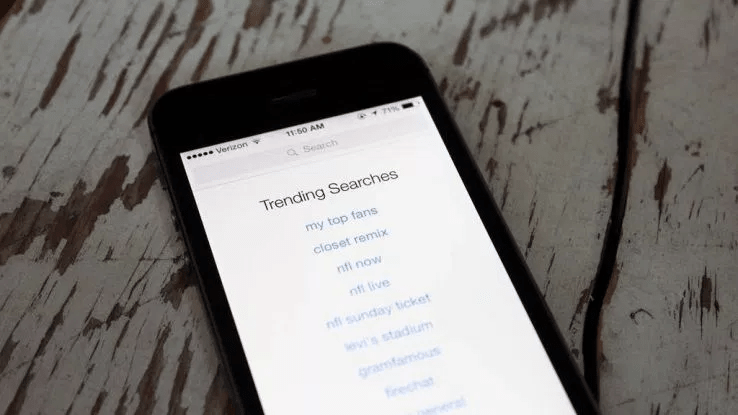
Search Term Conversion
Treated as a separate topic in ASO is the conversion you get on certain search terms. As a banking app you could target a keyword such as “music streaming” and even temporarily rank fairly high for it, but you will never be able to build a sustainable position for this keyword if your app is not relevant.
Both Google and Apple look at a keyword-level to determine how well you are able to convince a user into clicking through to your app store product page and/or download the app. Whilst based on the ranking behavior, it seems that the App Store primarily only looks at CTR and install rates, Google Play appears to look at retention and engagement on a search term level.
For ASO search term conversion comes into play when thinking about the search optimization beyond the individual keyword and making your search result relevant to the search term.
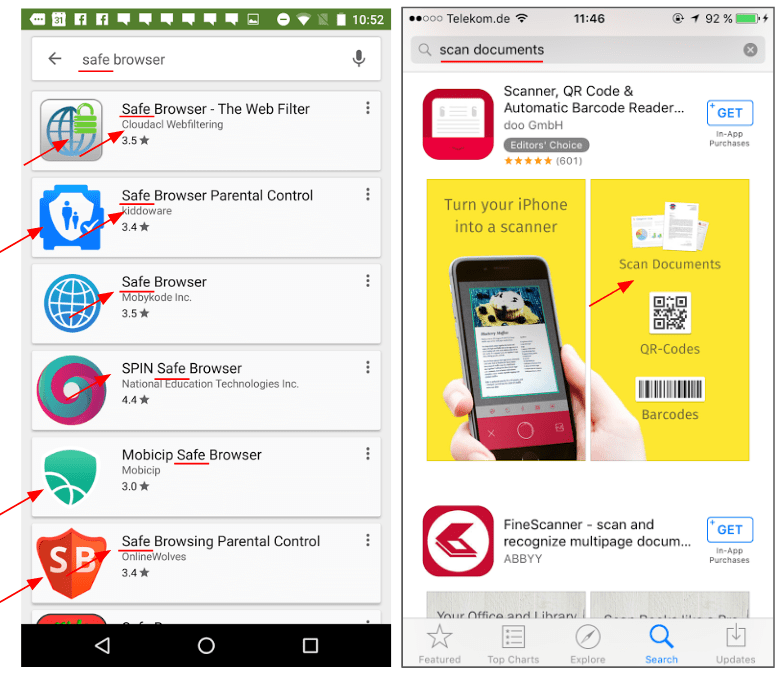
The arrows point at examples that increase relevancy (and with that, CTR) to our search term.
Localization
Described here from three angles, in the first place localization helps with increasing visibility; by providing metadata localization, locally relevant search terms can be added. Furthermore, it goes without saying that successful localization goes beyond simple translation. One way is that a sports app must target differences in English for differences in dialect, such as “football” versus “soccer.” Or, a slots app needs to target “slots” in the US and “pokies” in Australia. Visibility uplifts can produce excellent gains for ASOs looking for growth. Incidentally, SoundCloud saw an uplift of almost 400% in downloads just by translating the app store keywords field intro Russian.
Secondly, localization helps with conversion optimization. Making the app visible for locally relevant search terms (“soccer news” instead of “football news”) is a good first step, but without going any further to localize the app store listing for the relevant audience’s intent, a UK “football fan” or a US “soccer fan” may just skip your app and download the next. Local country teams in ASO should go one step further and make sure that everything about the app screams local culture relevancy: local content, local currency, app functionalities that are locally most used, and so on. In another case for a big publisher, we even heard that showing a local mobile carrier in the screenshot can have an impact on conversion.
Localization also has an impact on the ability to keep and engage users: the ability to keep users after the download is believed to have a direct impact on search rankings. And indirectly the ability to retain users helps with review volumes and better ratings too.
Andrew Frost wrote a piece on localizing screenshots for the app store.
Ratings and Reviews
Both Apple and Google allow users to give a 1–5-star rating of an app, as well as add a review of the app that can be read by others browsing your store listing.
The number of reviews, the review velocity, and the star rating all have a big impact on visibility. Whilst retention and engagement metrics can be great indicators for app quality, they are also problematic as not every app (i.e. think flight booking apps) are used on a daily basis. Apple and Google thus logically use review & rating metrics as better signals of the quality of the app in cases such as this. These metrics are especially used for sorting search results.
Apart from an increase in visibility, the sheer number of reviews and the app rating have a significant impact on conversion, too. Qualitative surveys, as well as anecdotal reports on the impact of a drop or increase in star rating, clearly depict this. And it’s not only the star rating that impacts conversion rates: heat maps show that people do indeed also read each other’s reviews in order to establish the trust in an app. Next to the metrics, the quality of reviews is therefore very important.
The ASO can work with the product team or with a mobile marketing automation tool to encourage more people to leave a positive rating and review by triggering a rating request at the right time to ask for a review. It’s industry best practice that these triggers are preceded by some kind of filter so that happy users are redirected to the app stores, whereas unsatisfied users are asked for feedback. This has incidentally been rejected by Apple but remains a common practice. Additionally, having a rating trigger is especially on the App Store as ratings are ‘reset’ after each update for the current app version, making it crucial to place the trigger.
Finally, the ASO should be aware of the impact that developer responses (Google Play allowed them for longer, App Store just as of March 2017) can have on conversion rates. Not only can the individual user be helped and sometimes turned into a promoter instead of a detractor, but the developer engagement also helps build trust among potential users reading the reviews. Incidentally, replying to reviews can encourage users to revisit their 1-star rating after having been helped, which helps the star rating itself to increase.
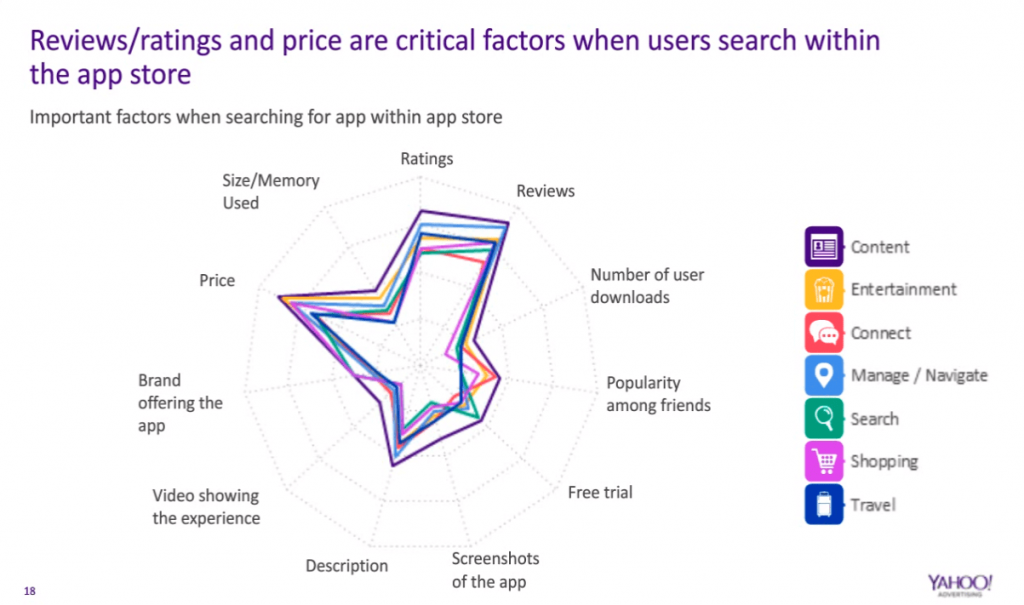
A Yahoo study showing the importance of ratings & reviews
Third-Party Android stores
Last but not least, leveraging third-party Android stores can generate an increase in visibility. Moreover, in China, these third-party Android stores are really a requirement to succeed, as the Google Play Store is blocked over there. But even outside of China, third-party stores can bring in substantial traffic. As fewer developers publish their apps in these stores, it might also be easier to build meaningful relationships with the store managers and acquire lucrative features.
For keyword optimization, it’s important to note that third-party stores all have their own algorithms: some, such as the Amazon App Store, draw keywords from a keyword field, while others operate based on inputs from other metadata fields.
Black Hat ASO
Apple and Google have their guidelines of what is and isn’t allowed in their app stores. Their guidelines are complementary to existing unfair competition regulations which already deems certain unfair practices illegal. For example, one law fines companies like Bell in Canada for $1.25M for leaving fake app store reviews. However, it’s the App & Play Store guidelines that control whether you risk getting talked to by Tim Cook, a ‘penalty’ or even get expelled from the developer programs.
The ASO should know “where to draw the line” on gray hat tactics (literal quote from the App Store Review Guidelines) and not only to stay out of harm’s way, but also make sure their competitors aren’t using shady tactics to gain an unfair advantage.
Whilst it might be enticing for developers to rate their own app or incentivize their users to do so, they should stay clear from these behaviors as they can get you expelled from the stores. The same goes for bot downloads and other Black Hat tactics. Some examples of less-stringent edge-cases can include going against guidelines that say that you should clearly depict in your screenshots if a feature is behind a paywall. Still, if your competitor is not clarifying this, but you are, you will always be one step behind. It’s therefore one part of the ASO’s job to draw the line and steer clear from any fraudulent behaviors, as well as detect and report these behaviors if competitors are crossing the line.
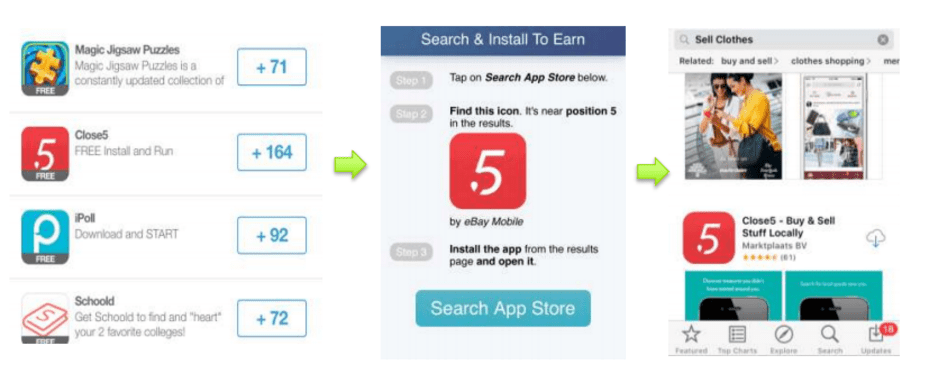
Example of a so-called keyword burst campaign, which increases your ranking for a particular keyword.
See you in the comments
Next time we’ll continue with a post on conversion rate optimization. We’d be happy to see you sign up for our ASO eBook newsletter, so that we can keep you in the loop on the eBook and upcoming posts.
In the meantime, also look out for the 12th post in the ASO Monthly edition. If you liked this post, leave us a ❤ and share it on your social media. If you have suggestions or questions about the Stack, please do let us know.
P.S. At the end of the month I’m presenting the stack at Applause in Barcelona — hope to see you there.
Thanks!
A big thank you for our industry experts Emily Grossman, Peter Fodor and ThomasBCN who participate in the eBook. Also a shout out to all ASO tool vendors that offered their help with the book (so far: AppBot, AppFollow, AppRadar, AppTweak, ASODesk, PrioriData, Raisemetrics, SensorTower, SplitMetrics, Store Maven, TestNest and The Tool).

